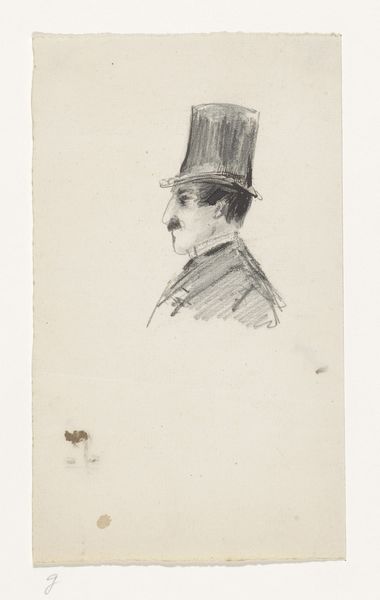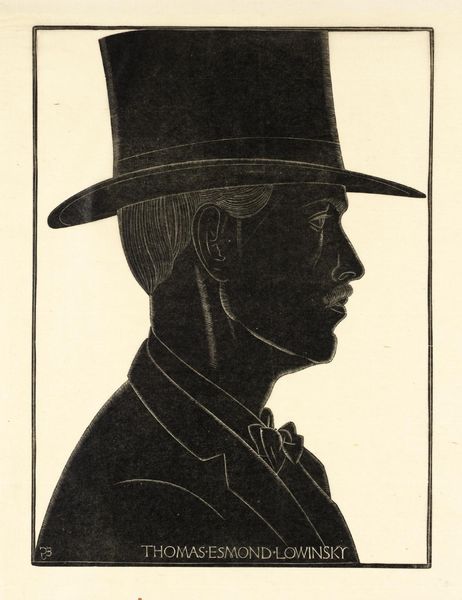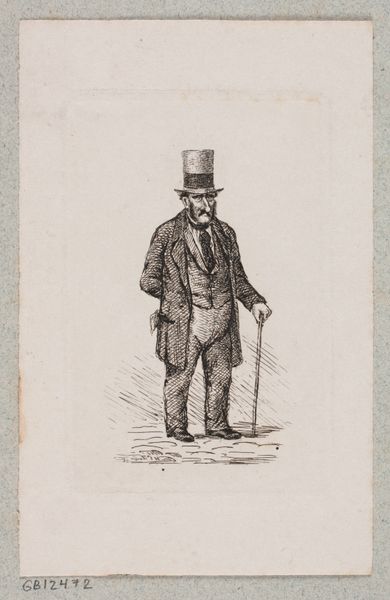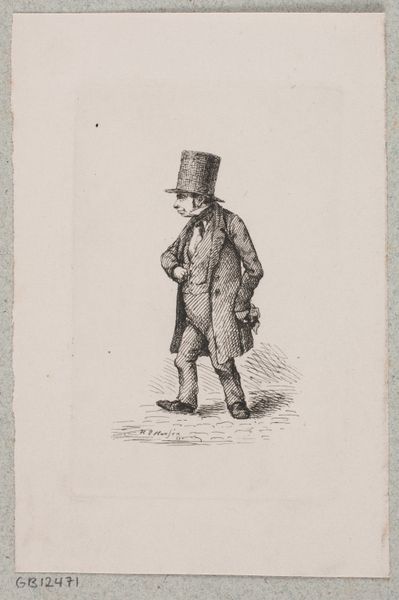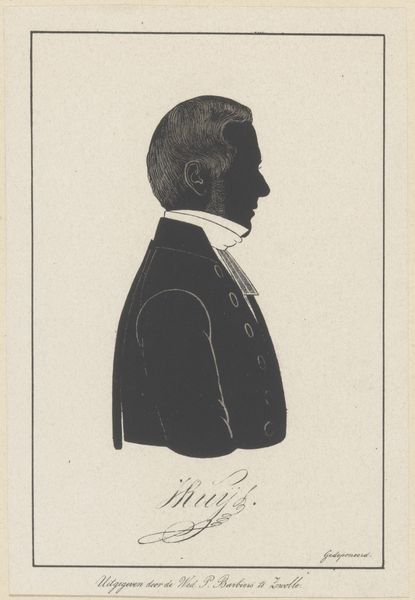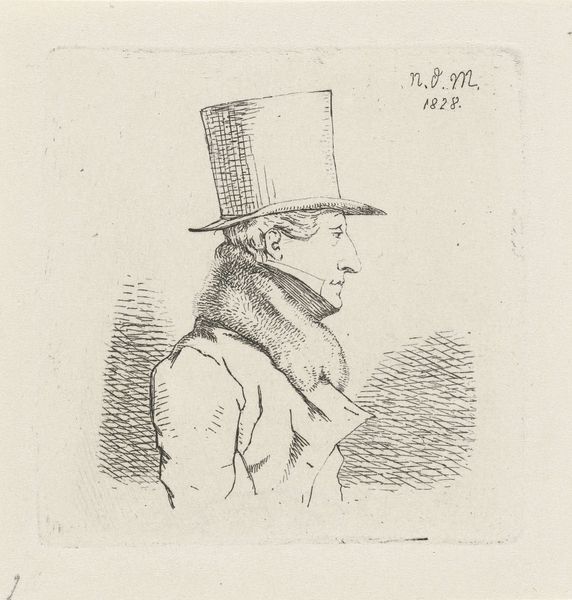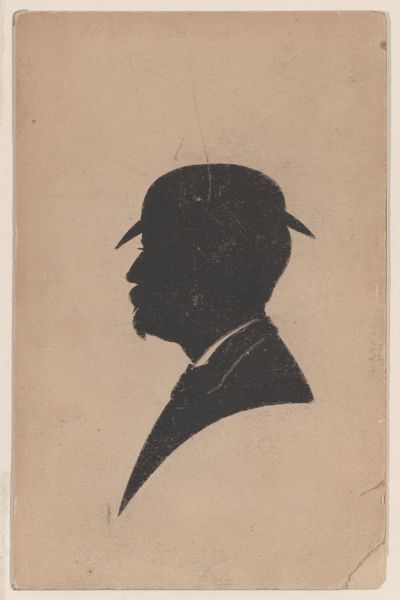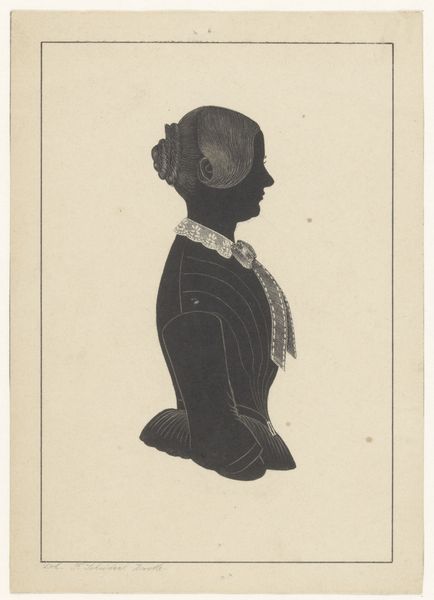
Silhouette of an unknown young man in a top hat 1840 - 1845
0:00
0:00
drawing, print, paper, pencil
#
portrait
#
drawing
# print
#
paper
#
coloured pencil
#
romanticism
#
pencil
Dimensions: Sheet: 4 1/2 in. × 3 in. (11.5 × 7.6 cm)
Copyright: Public Domain
Editor: Here we have “Silhouette of an unknown young man in a top hat” created by G. Bonner between 1840 and 1845, a drawing and print on paper, currently held at the Met. It's such a stark and simple image, so striking, even. What strikes you most about this silhouette? Curator: What intrigues me is what a silhouette *omits*. Think about it – in the early to mid-19th century, portraiture was becoming increasingly accessible, but it remained a potent signifier of status. Why choose to obscure identity in this way? Does it democratize the image by stripping away details, or does it perhaps *intensify* the subject's mystery and perceived importance through its very restraint? What statements might the act of turning away convey, regarding societal positionality or political engagement at the time? Editor: That's a great point. The absence of detail really does change how we interact with the image. So you think the anonymity could be a statement about class, maybe? Curator: Potentially. Consider the social and political upheavals occurring during this period. Could this be a comment on the era's burgeoning revolutions, an artistic expression regarding collective identity? Or perhaps it serves as a reminder of those intentionally or unintentionally marginalized voices during times of shifting powers and new hierarchies. How does viewing it through that lens resonate with you? Editor: I hadn't considered that! I was so focused on the 'who' that I missed the larger historical and social context. This really offers so many possible narratives. Curator: Exactly! It is through questioning the seen, and equally, the unseen, that historical pieces of art gain modern and current relevancy, and initiate further conversations of reflection. Editor: I’ll definitely be looking at silhouettes differently from now on. Thanks for sharing your insights!
Comments
No comments
Be the first to comment and join the conversation on the ultimate creative platform.

